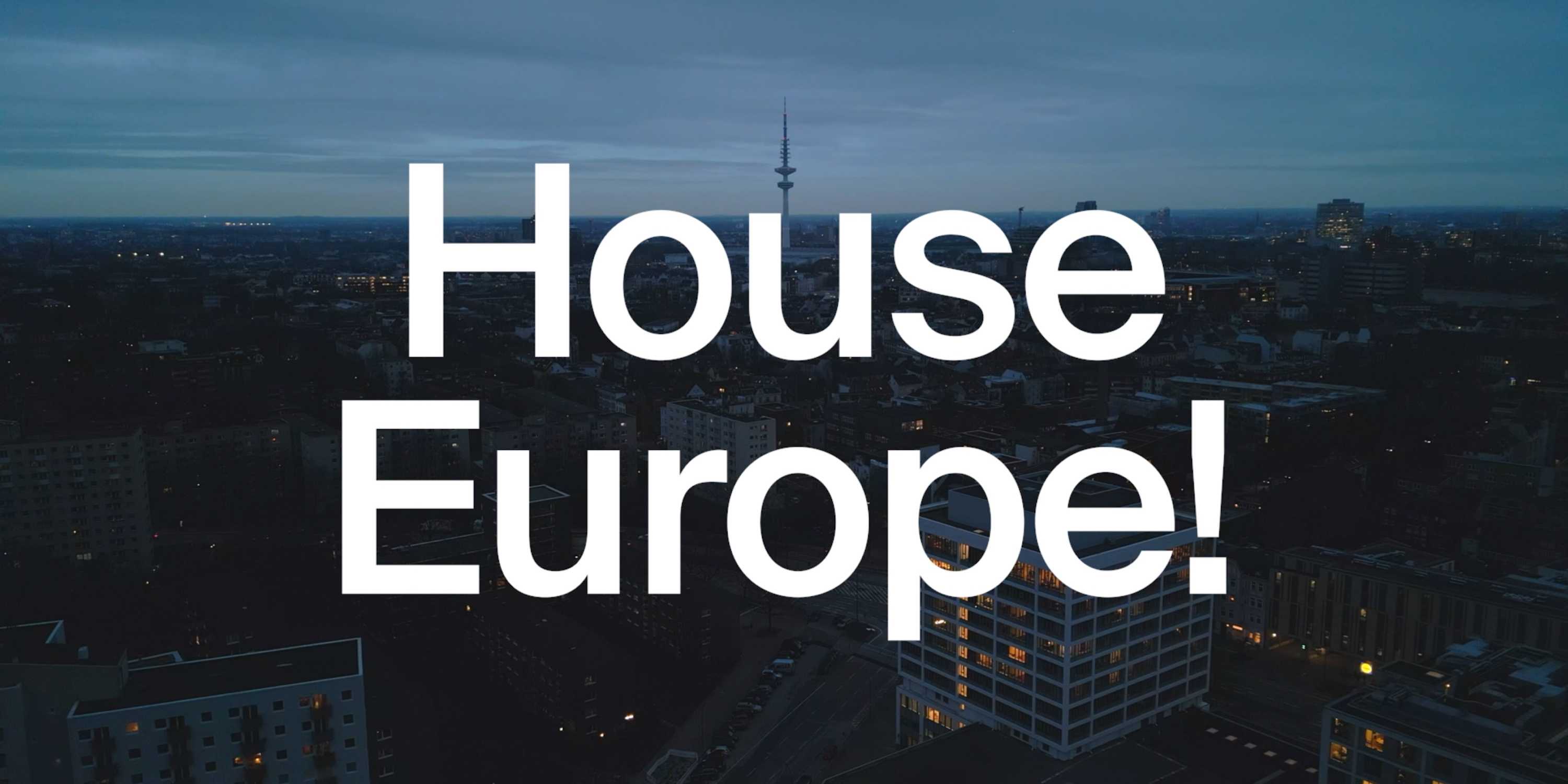The European Citizens’ Initiative “HouseEurope!” calls for a “right to reuse” for existing buildings
The initiative was co-initiated by Professor Arno Brandlhuber's chair. An exhibition on the subject will open at ETH Zurich in December, and the collection of signatures will begin in January 2025.

By 2050, billions of square meters of existing space will be demolished in Europe - which corresponds to about half of the entire German building stock or more than Paris or Berlin combined. "This leads to a scarcity of affordable homes, job losses, and environmental damage," writes a team of experts led by Arno Brandlhuber, architect and Professor at ETH Zurich.
He has therefore launched the European Citizens' Initiative "HouseEurope!" together with Ludwig Engel, Olaf Grawert and Alina Kolar to acknowledge and safeguard the value of existing buildings. The aim is to create legislation at EU level "that prioritizes the preservation, adaptation, renovation, and transformation of existing building stock over demolition and rebuilding driven by financial speculation." The initiative aims to make renovations more affordable, easier and more social. "Because the demolition of existing buildings is as outdated as food waste, animal testing and single-use plastic," writes the committee of the initiative.
Similar to the Swiss referendums in which new laws are voted on, citizens from EU countries have been able to propose either new laws or changes to existing laws with the European Citizens' Initiative since 2012. If one million EU citizens from at least seven countries support the issue, the European Commission must examine the proposal and set up a working group.
For the preservation of the Mäusebunker
Both Brandlhuber's chair external page station.plus and his external page office b+ in Berlin have been working intensively on the legal framework of architecture for some time, for example with the research project "Legislating Architecture Switzerland" on the Swiss building law in 2016. The idea for the EU initiative came while the office was working on the "Mäusebunker" in Berlin, a brutalist building that was due to be demolished. Despite growing support for its preservation and renovation, the owners' attitude was clear, because for them the calculation was simple: the costs of renovation exceeded the value of the land and building.
There is a systemic disadvantage behind this. "Renovations are classified as riskier because we do not evaluate the potential of existing buildings, but only the supposed risks," explains architect Olaf Grawert, partner in the office and co-initiator of the initiative. This is why renovation is perceived as more difficult and is therefore becoming increasingly expensive. "Demolition and new construction are considered to be easier and less risky because the energy invested has no value and therefore no price and because the risks of new construction such as material shortages or delivery bottlenecks are not assessed. Therefore, demolition and new construction are always cheaper."
“Renovations are classified as riskier because we do not evaluate the potential of existing buildings, but only the supposed risks.”Olaf Grawert

The initiative committee is currently working on the proposed law. The core demand is a "right to reuse" for existing buildings, which is based on three pillars: tax relief for renovations and reused materials, such as a reduced VAT rate. Fair and transparent rules for assessing the potential of existing buildings so that not only the risks are taken into account. And new values for the embodied energy and the CO2 content bound in existing buildings, which would otherwise be ignored.
"HouseEurope!" works with people from the architecture scene, legal experts, economists, social and environmental scientists and futurologists. "However, we are not part of a political party because we believe that the problem affects us all," says Alina Kolar, campaign manager of "HouseEurope!". In a democracy, every initiative or revision of the law needs the support of the population. "It takes a lot of translation work of expertise and comprehensible narratives to convince the general public and not just the activist groups."
“It takes a lot of translation work of expertise and comprehensible narratives to convince the general public and not just the activist groups.”Alina Kolar

On the external page project's website, video clips from the film "The Demolition Drama" explain the background. The proposal is supported by architects and emeritus ETH Professors Jacques Herzog, Pierre de Meuron and Anne Lacaton, among others. external page A renovation atlas maps best-practice examples from all over Europe where existing buildings have been renovated and transformed. To publicize the initiative in other countries, Brandlhuber's chair is working with universities in Austria, Germany, Italy, Denmark and other EU countries. And "HouseEurope!" is part of the International Architecture Biennale Rotterdam, which takes place from June to October 2024.
In the last two semesters, the design studio has also revolved around the initiative. "We think of the studio like a campaign office," says Olaf Grawert. "We want to give students the tools to develop their own projects and become active themselves." The "HouseEurope!" initiative will be the subject of the next two Master's thesis semesters at the Department of Architecture. Students will provide answers to the question: "How can Europe or Switzerland be housed in existing buildings?" Brandlhuber's professorship is preparing an exhibition in which all the chairs will give their answers in a video statement. The exhibition marks the start of the one-year signature collection phase of the initiative, which will begin in January 2025.

HouseEurope!
Committee of the initiative: Arno Brandlhuber, Ludwig Engel, Olaf Grawert, Alina Kolar
Website: external page houseeurope.eu
Public lecture series: 17. September, 24. September, 1. October, 8. October 2024
Exhibition at gta Foyer, HIL building, ETH Zurich, Hönggerberg. Opening: 16/17 December 2024